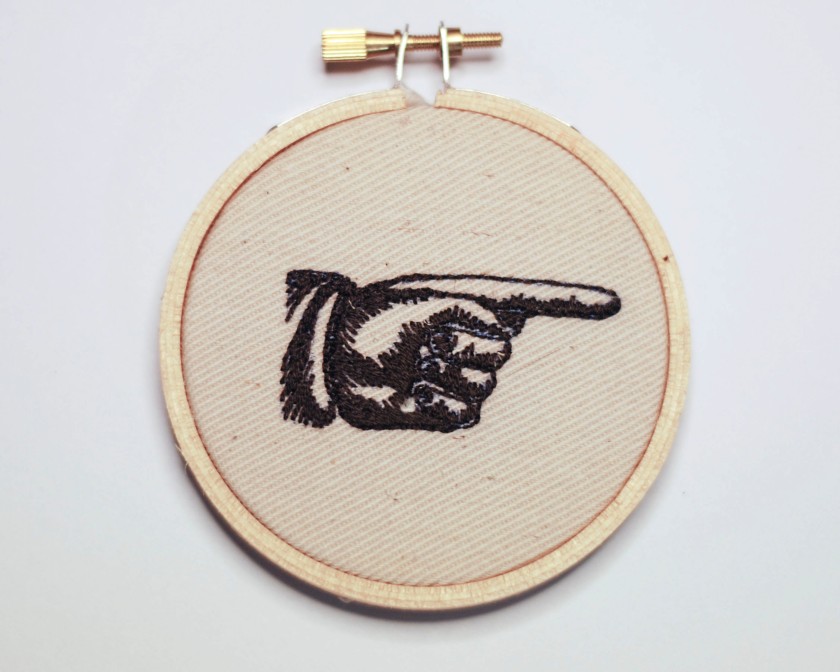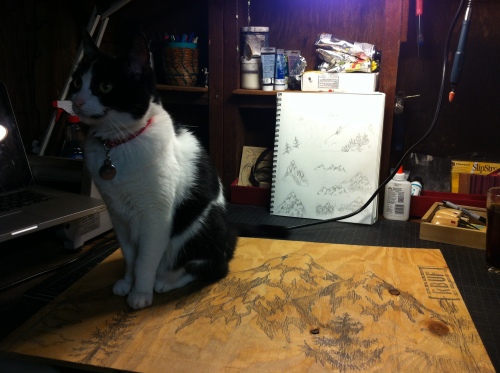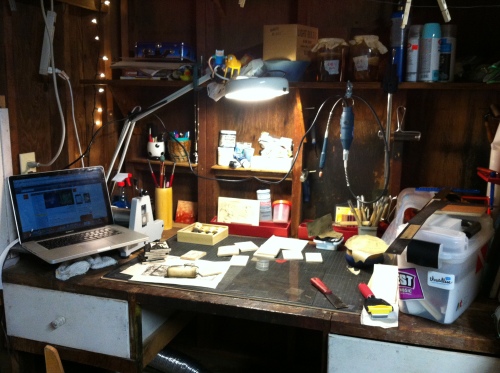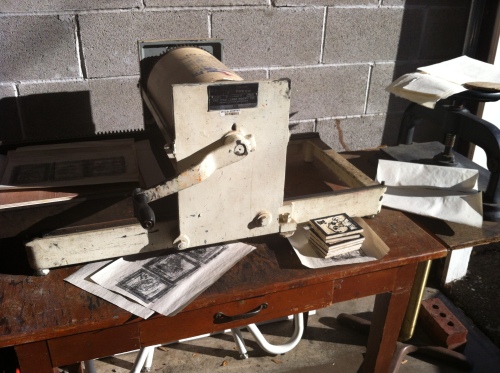On the shelf above my workbench there’s a box.
 That box contains my collection of type cuts–also known as printing blocks, or letterpress cuts. They’re images etched into wood or lead, meant to be printed alongside letterpress type.
That box contains my collection of type cuts–also known as printing blocks, or letterpress cuts. They’re images etched into wood or lead, meant to be printed alongside letterpress type.

It’s an eclectic mix of images that I’ve hand picked for one reason or another. These are a few of my favorites:


This one is a simplified line etching of a traditional platen press–the kind of printing press used for traditional letterpress printing.

As a Pacific Northwest native, I do love trees.

And crabs.
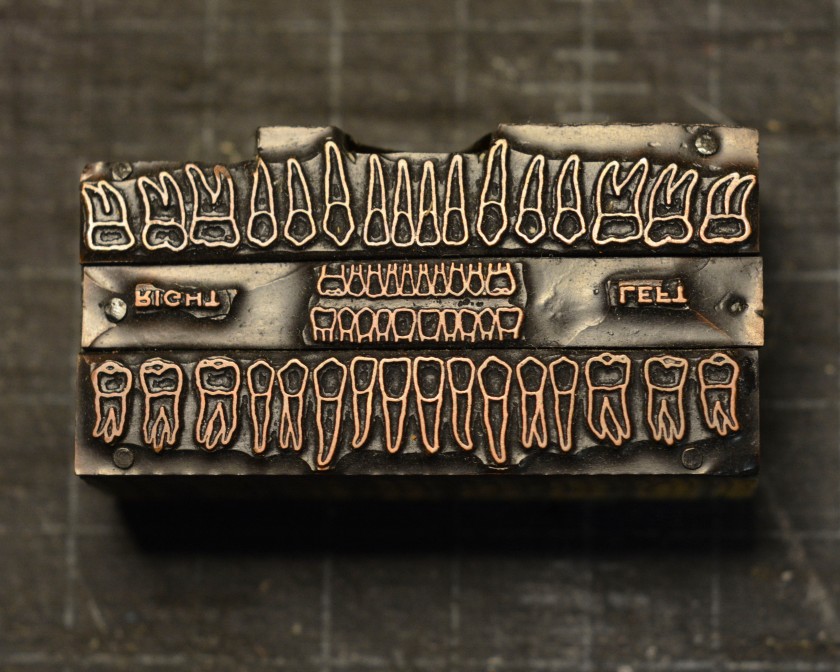
By far my strangest cut is this one–it’s about 3″ across, and was presumably used for creating dental records. Can you even imagine something as mundane as dental records being hand printed?

But this one is my favorite. Surrounded by intricate images of elk and horses and trees and other oddities, this pointing hand is the jewel of my collection. It looks like metal but it’s not–this is my only wood etched type cut, carved from a single piece of wood rather than from lead (or lead mounted on a wood base).
The hand itself is probably recognizable–this design, called a manicule, has become popular in modern graphic design. They were originally used to draw attention to important text in documents and books dating back to the 12th century, a common form of marginalia on some of the earliest letterpress printed materials.
Given its history and delicate line quality, it’s hard not to love. I mean look at the individual carved lines–so much information in such sparse, elegant detail. This is what you think of when you think traditional woodcut design.
I recently used a few of my favorite cuts for a somewhat eclectic project, which I’ll explain in a later post. For now, here’s a teaser:

Happy Friday!
 It’s probably pretty self-explanatory–I used them as embroidery patterns. By taking them through my Challenge proof press with carbon paper, I printed them on unbleached linen, then embroidered the images.
It’s probably pretty self-explanatory–I used them as embroidery patterns. By taking them through my Challenge proof press with carbon paper, I printed them on unbleached linen, then embroidered the images. These are each in either 3″ or 5″ hoops.
These are each in either 3″ or 5″ hoops. And right now, they’re all available for sale at the Corvallis Art Center’s Art Shop!
And right now, they’re all available for sale at the Corvallis Art Center’s Art Shop!
